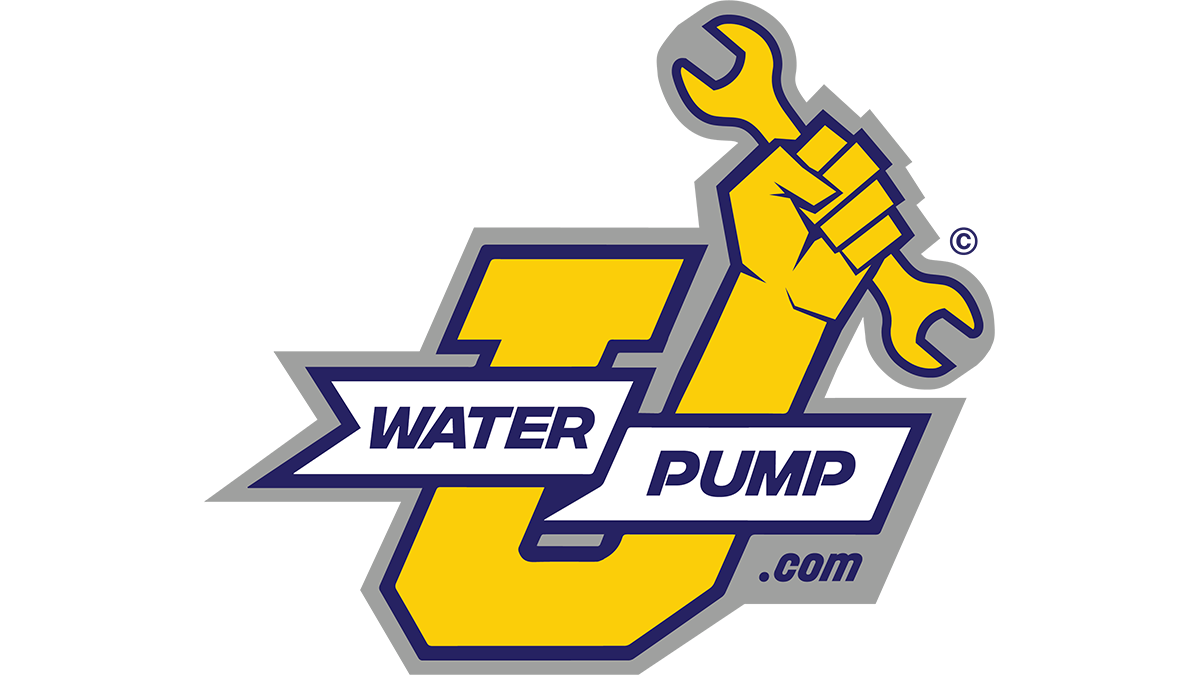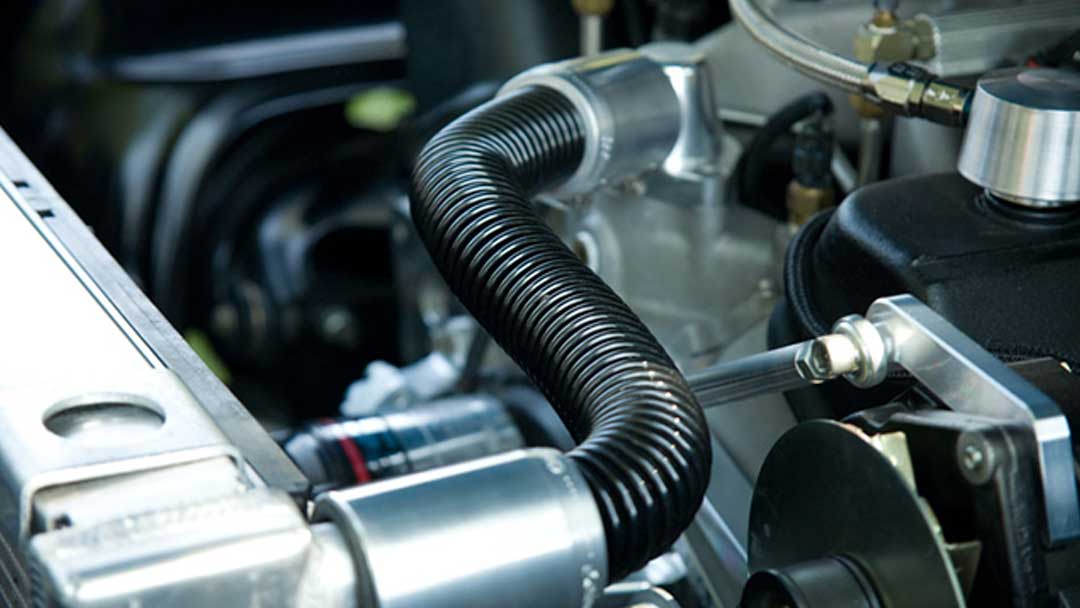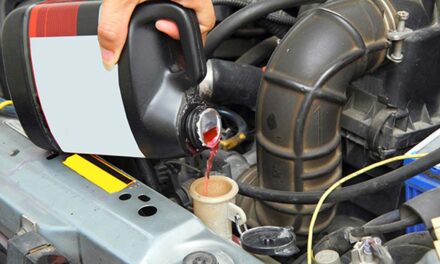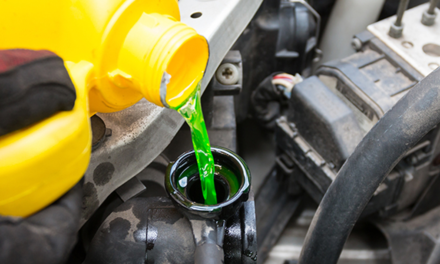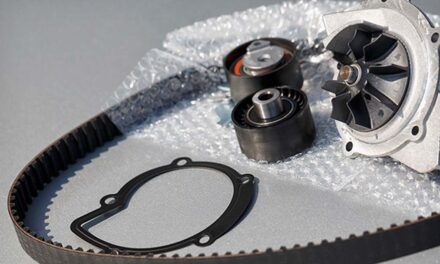Cooling system leaks can be internal or external in nature. Either one is cause for concern and immediate attention to head off any possibility of overheating or catastrophic engine failure.
External coolant leaks are the type caused by a component failure such as hoses, water pump, radiator, engine gaskets, or freeze plugs. Internal coolant leaks are generally in the intake system, cylinder heads or cylinder head gaskets caused by previous overheating.
Some coolant leaks will be obvious while others, such as internal leaks, might be hard to find. External leaks, other than the obvious, require a radiator pressure tester to locate properly. These external leaks will only be evident when under high pressure. It is much safer to pressurize a cool system and look for leaks as opposed to allowing the engine to overheat to create pressure.
While external coolant leaks are a cause for overheating, internal leaks contaminate the oil by allowing coolant to mix with it. A head gasket leak will not only contaminate the oil but allow oil to contaminate the coolant as well. Coolant is not compressible, and if it enters the cylinder in sufficient quantity due to a blown head gasket, internal engine damage is usually the result.
Always keep in mind that an overheated engine is dangerous. If the vehicle is beginning to overheat or is presently overheating, shut it down immediately. Make no attempt to lift the hood to find the problem. The vehicle uses a closed cooling system, and the coolant is under pressure. When an engine overheats, the pressure may rise to over 40 PSI and reach temperatures upwards of 330 degrees F.
If you lift the hood without allowing the engine to cool, you could be showered in hot liquid or steam. Always allow 15 to 20 minutes for the engine to cool first. Never take a radiator cap off until it is cool enough to touch.
Symptoms of Coolant Leaks
- Engine miss
- Engine overheats
- Coolant in the oil
- Loss of coolant
- Engine locked up or will not turn over (water in the cylinder)
- Oil contamination in the radiator
- Rattling noise from a faulty water pump
- Steam from exhaust
- Dipstick and oil cap appear to have “mud” on them
- Coolant in the radiator has oil contamination
Causes
- Faulty hoses, gaskets, radiator, radiator cap, heater core, or water pump
- Engine miss due to water entering the cylinder
- Faulty cylinder head gasket
Diagnosis
- Checking for an Internal Leak
- Observe the symptoms. If steam is emitting from the exhaust and there is an engine miss, a head gasket is suspected.
- Look at the dipstick, under the oil cap, and in the radiator. If a muddy substance is present, a head gasket or intake manifold leak is suspected.
- Check to see if it is an intake manifold or a head gasket leak.
- Use a head gasket test kit, which consists of a glass tube with a suction bulb and blue head gasket test fluid. If a head gasket is bad, carbon monoxide will be present in the coolant. The test fluid turns from blue to yellow in the presence of carbon monoxide.
- Fill the radiator to within three inches of the neck. Start the engine. Place the tester in the filler neck and fill the tester to the mark with the blue testing fluid. Do not allow coolant to be sucked into the test fluid, just the gas.
- Pump the suction ball several times to draw in any exhaust entering the system. If the test fluid turns yellow, carbon monoxide is present in the coolant, indicating a head gasket failure. If the fluid does not turn yellow, an intake manifold problem is indicated.
If the test is positive for carbon monoxide, it will require a head gasket replacement and a cleansing of the oil pan, and flushing of the entire cooling system to rid it of oil contamination.
There are several methods to determine which cylinder head has a blown gasket. The leak will be between two adjacent cylinders. They will be cooler than the non-affected cylinders, so just spray water on the exhaust manifold at each cylinder. The ones on which the water evaporates slowly are the affected ones.
Another way is to pull all the plugs until you find the ones cleaned by the coolant. A temperature probe also works well for locating the affected cylinders.
If the test fluid did not turn color, the intake manifold is the source of the internal leak. It will need to be removed and inspected for cracks. Many present-day manifolds are plastic and prone to cracking. If there are no cracks evident, replace the intake gasket.
- Install a radiator pressure tester on the radiator neck. Make sure the radiator is full of water to within 3 inches of the neck. Pump the pressure tester to 17 PSI and look for leaks.
- Look at the radiator for cracks in the tank or core. Radiators are made of plastic and prone to cracks in the tank area.
- Check all the hoses and around the intake manifold.
- Check the passenger-side floor. If it is wet, the heater core is leaking.
- If a leak is detected coming from behind the timing belt cover, the water pump has failed.
- If a leak is detected under the exhaust manifolds or between the transmission and rear of the engine, a freeze plug has failed.
